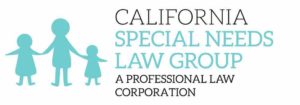Exploring the Philosophy of Special Education
For reasons that are still unclear, more and more children are being diagnosed with disabilities, from Down syndrome to speech impediments. According to the Center for Disease Control, an astonishing one in 50 American children is diagnosed with some form of autism, a ratio that has demonstrably gone up over the past decade. Accordingly, we’re seeing increased awareness of the need for screening, treatment, and understanding, when it comes to children with special needs.
Part of this trend is manifested in a new wave of attitudes in special education that on the whole stress a non-clinical, organic, and inclusive approach to students. Here is a brief cross-section of a few of the prevailing schools of thought:
Person-centered planning
In the past, special education often fell into the same pitfalls of a more clinical-based approach to psychology. Students, like patients, were seen as problems to be first classified, then fixed, by a specialist tooled in a highly specialized jargon of symptoms and syndromes. As a result of such “service-centered” orientation, many special ed students found themselves more identified with their problems than their strengths, making them feel more ostracized from society at large.
In contrast, current person-centered approaches turn the above equation on its head by using students’ goals and desires to guide growth, rather than external metrics of normality. In a nutshell, PCP is a “people first” philosophy that values’ students abilities to make choices, nurture abilities, and feel comfortable in all social spaces.
The methodology of PCP is straightforward yet dynamically responsive to individual needs on a case-by-case basis. Educators adopting this model help special ed students build a sense of themselves using their own vocabularies rather than alienating labels and jargon, and this process is itself a source of empowerment and identity-building. From conversation and observation, teachers glean extant talents and dreams in each student and then build plans of action to bolster these nascent positive attributes in a real-life way. For older students, this may include charting a vocational path.
“Mainstreaming”
As addressed within the discourse on person-centered planning, one of the biggest stumbling blocks among special needs students is a strong feeling of being an outcast; a sense of being unable to contribute meaningfully to mainstream society. Although not without its critics, mainstreaming, or a more integrated and inclusive approach to placement for special needs students, attempts to break down a number of stigmas.
Mainstreaming isn’t a one-cure-fits-all panacea, but for students who fit the right profile, the results are powerful. Since effectiveness of this approach is contingent on positive reinforcement from a sea of potentially hostile peers, mainstreaming works best with already high-functioning students with less obvious symptoms, such as ADHD. Obviously, kids with a history of violence, self-inflicted or otherwise, are usually unwise candidates. But when the fit between a student’s social competency is met with an open enough mix of other kids, everyone benefits.
When special ed students are “ghettoized” into their own exclusive group, said students can develop an unhealthy fantasy of what “normal” people on the other side of the fence are like. At worst, they can develop intense anxiety toward non-special needs agemates, and consequently may act out dramatically in the presence of potential bullies—sadly, often just the kind of stimulus needed to trigger a bully’s victim-antennae. By spending at least some time among “regular” classmates, special needs kids can build the social muscle needed to avoid accreting a fixedly risk-averse behavior type. On the flipside, non-special students in an inclusion class will mature through facing difference and understanding tolerance through the rhythms of daily life.
Social stories
Of the many learning and behavior issues that exist, few have commanded public awareness in recent years as autism. Accordingly, new ways of intercepting the well-known social awkwardness of autism have arise, prominent among these the “social stories” model. In this framework, the obsessive elements of autistic behavior are viewed as a sort of internalized “script” of stimuli and responses. Through a path of co-operative shaping and chaining, teachers and students craft a new narrative to gradually re-route a path of reaction that the autistic child has grown to see as inevitable.
After getting to know the student and his or her behavior, a teacher will help script a new personal “story” regarding any number of social situations, using a codex of task-specific sentence types. Say a student has a problem with touching their nose obsessively. A social stories approach would help the student verbalize the silent monologue that usually accompanies said negative behavior, then voice a new set of outcomes in its stead. Not only does this help socialize autistic kids, it also empowers them though achieving self-directed personal goals.
None of these approaches is a magic bullet for any disorder, and as with any kind of treatment, diligence must be taken to observe successes and failures on a daily basis. Just as we’re seeing various forms of more inclusive, integrated approaches to special ed placement, the current rise in incidents of bullying can create a perfect storm for harassment and trauma. Still, special education has become more enlightened toward the roots of disabilities, and while we may not ever be able to cure these afflictions, we have the power to help special needs individuals carve more fulfilling lives than ever.





Leave a Reply
Want to join the discussion?Feel free to contribute!